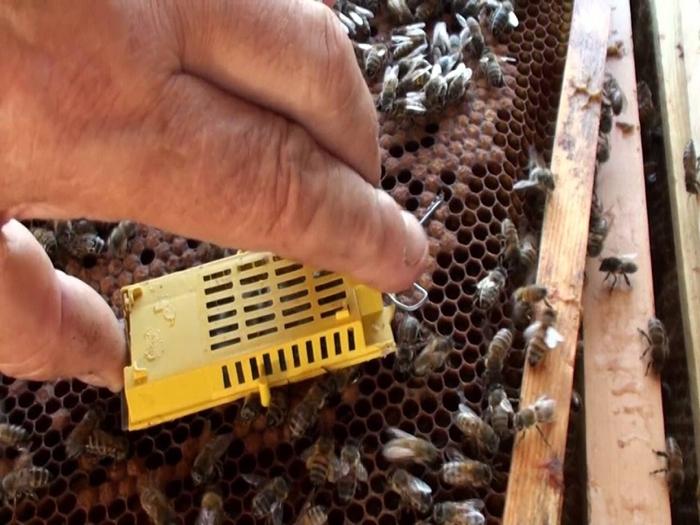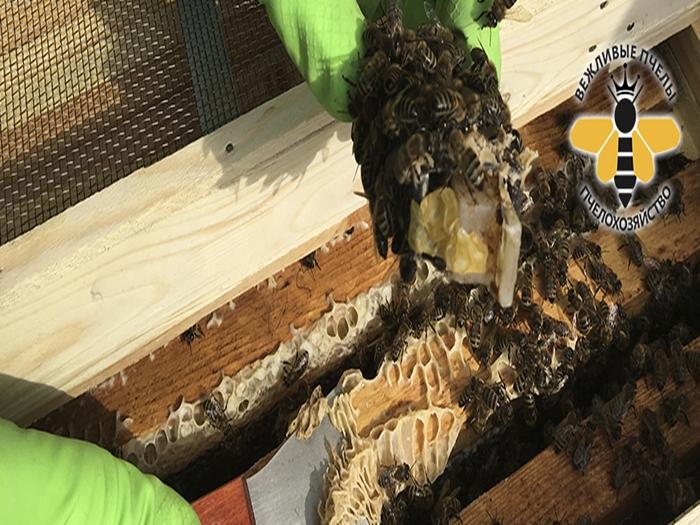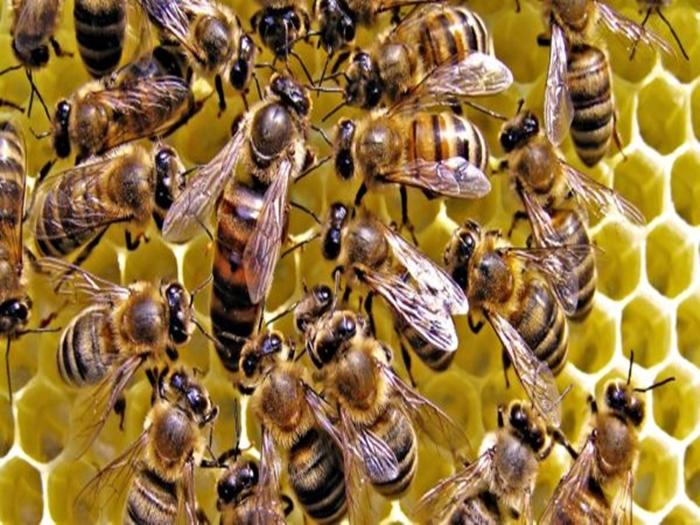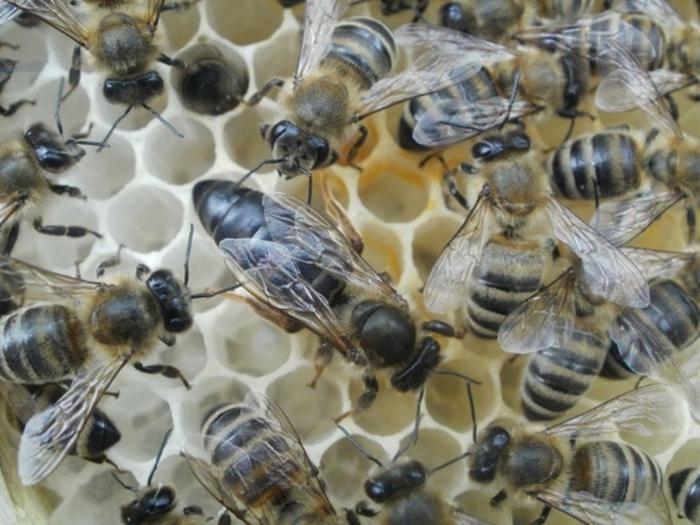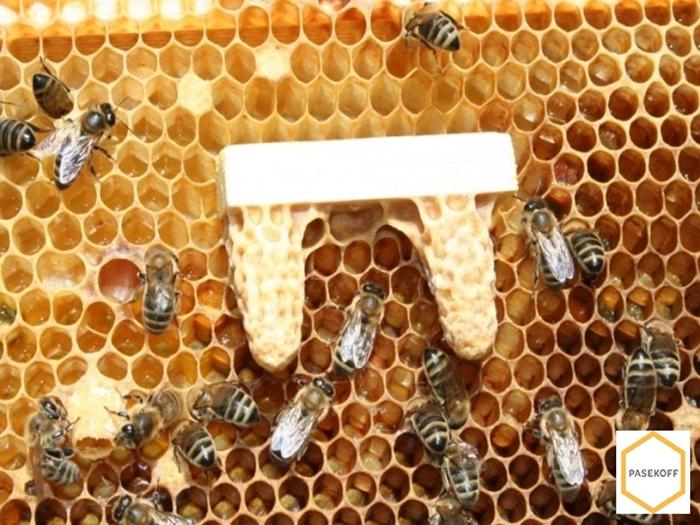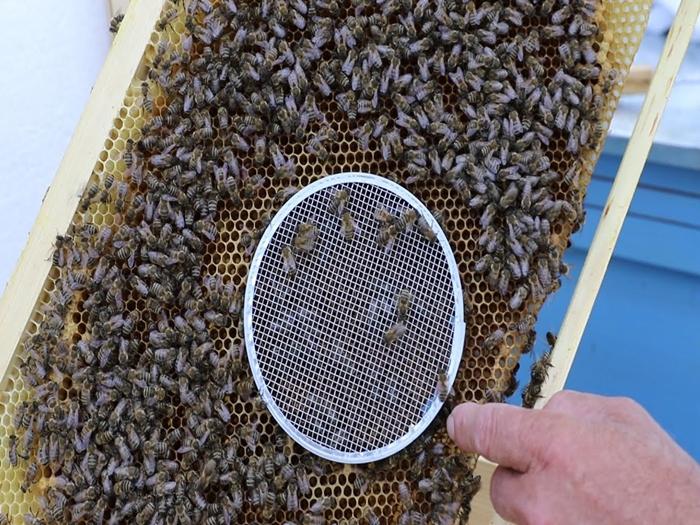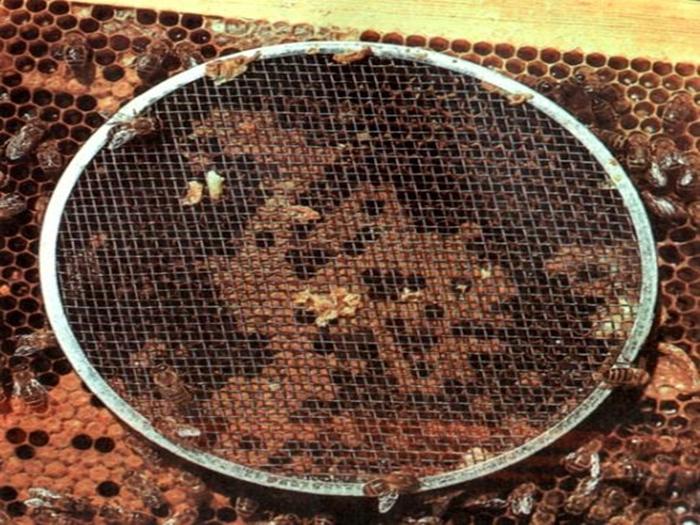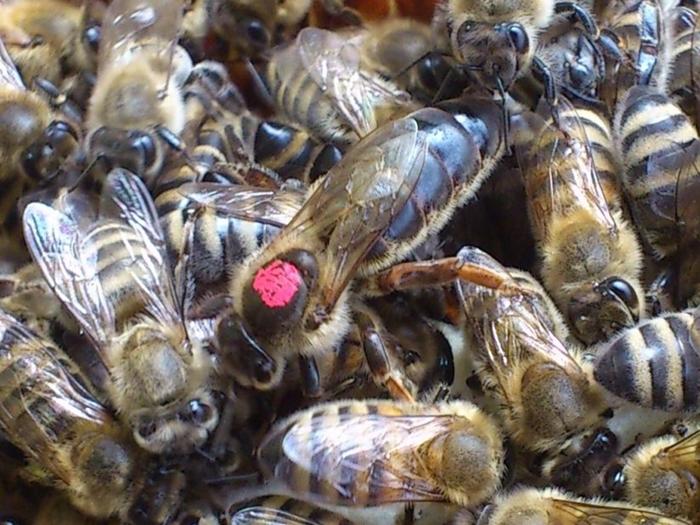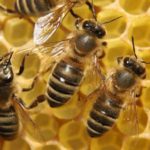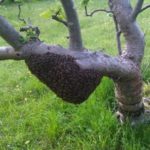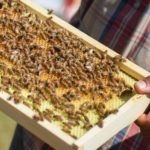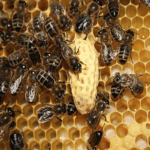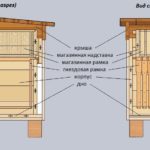Beekeepers are often faced with a situation where it is necessary to insert a fertile uterus into a queenless colony in order to save it. This is a rather difficult task that does not always give results. It all depends on a number of factors - methods of carrying out the procedure, the condition of the bee colony and queen, and climatic conditions. How to properly place a queen in a hive? There are several ways you can do this.
The meaning of uterine transplantation
The older the queen bee, the more drone eggs she lays.As a result, the colony's propensity to swarm increases and honey production decreases. There is no point in keeping the queen in a bee colony for more than 2 years. Therefore, it is important to timely place the young individual in the cuttings. It is important to keep strict records and register replacement queens.
Unscheduled replacement is carried out for the following reasons:
- decreased productivity of the bee colony;
- unsatisfactory wintering - diarrhea, an abundance of death;
- physical damage;
- the need to change the gene pool - this is required if insects become too aggressive;
- need for breed replacement;
- development of diseases in the hive.
After the spring inspection, it is worth making notes about the strength of the bee colonies, the condition and origin of the queen. Constant replacement of queens increases productivity and promotes the appearance of brood until late autumn. This has a positive effect on wintering.
What is needed for this?
To add a queen bee to a queenless colony, the following conditions must be met:
- warm and sunny weather without wind;
- the presence of a good bribe - in this case, the bees should be calm and productive;
- spring or summer - these are the seasons that are most suitable for replacing the uterus;
- evening time of day.
How to add a queen to a hive
To add a queen to a hive, it is recommended to choose the right method and strictly adhere to the recommendations for this procedure.
Rules for easy replanting
To properly replant the queen bee, it is recommended to adhere to the following rules:
- Place the female from April to the first half of June. At this time of year, the hive is dominated by young bees, which are loyal to new individuals.
- It is best to place the queen in a small but growing colony. In layerings with flightless young individuals there is no aggression towards new bees.
- In order for the bees to accept the queen, all honeycombs with larvae and eggs must be removed from the hive. It is also necessary to remove infertile queens.
- You cannot transplant after the main honey collection - in July and August. At this time, the bees show strong aggression.
- Transplantation can be carried out from late August to October. The bee colony's aggression decreases and they accept the queen.
- You should not replant the queen at a time when bees are most suspicious, when there are frequent cases of theft.
- You should not place the queen with bees in a pre-swarm mood.
One of the transplant options is in a forwarding cell. Breeding farms sell fetal queens in plastic containers, which consist of two compartments.
You can also place the queen bee under a hood.
Direct method
This method is considered quite risky. When it is used, the queen enters the family without any special mechanical means of protection from aggression. This method can be used in the following situations:
- when replacing an old individual with a young one;
- during active flowering of honey plants;
- for small growing colonies with a large number of printed brood;
- for families with a predominant number of young individuals.
The procedure is simple. First, it is necessary to remove the old queen from the bee colony and remove from the nucleus the new queen with the comb on which she was located at the time of removal.
Indirect method
In this case, beekeepers use mechanical devices that temporarily isolate the queen from contact with aggressive insects.For this purpose, caps, cages, and insulating containers are used.
The most popular option is the Titov cage. At the same time, replanting the queen bee is simple. To do this you need to do the following:
- Eliminate the old queen bee, and in her place place a young queen in a cage.
- Attach the cage to the honey part of the comb.
- Carefully inspect all brood combs in the hive for fistulous queen cells.
- After 3 days, release the queen bee and seal the exit from the cage with wax or lining.
- Closely monitor bee behavior. If insects enclose the queen in a club, she must be returned to the cage for 3 days. Then you need to try again.
The main advantage of this method is the impossibility of killing the queen bee by aggressive bees. However, this method causes a lot of discomfort to the queen herself. This is due to unnatural living conditions, poor diet, risk of injury, and stoppage of egg laying.
Acceptance of the new queen by the bees
Sometimes there are situations when the bees do not accept the new queen bee. In this case, you should watch for insects. If they are calm, you can try releasing the queen onto the honeycomb or making holes in the foundation.
If the bees show aggressiveness, there is no need to rush to release the individual. If the queen is in a ball, she needs to be put back into the cage. In this case, you need to wait for changes in the state of the insects or simply take the brood from them. This has a calming effect on them.
Possible difficulties
When placing a queen bee, you may encounter the following problems:
- The bees destroy the substituted queen cells or do not lay their own. This means that there is a barren uterus in the family.The queen needs to be found and decided what to do with her.
- There is no seeding of eggs and larvae in the bee colony. This means that the bees did not accept the queen or the individual was infertile. In this case, you need to place combs with one-day-old eggs from another family, wait 5-10 days, and then check the presence of queen cells.
- There is no seeding of eggs and larvae in the colony, however, on 2-3 honeycombs the bees polish the cells. This indicates that the queen is preparing to lay eggs. The presence of seeding should be checked after 3-5 days.
- The bees laid many fistulous queen cells. This indicates the disappearance of the queen bee. In such a situation, it is necessary to tear off the fistulous queen cells and give a new queen.
- Several queen cells have the correct shape. This suggests that the bees have not accepted the queen and want to spend her quiet shift. Unless it concerns another breed, it is better to leave the queen cells until new individuals emerge.
- The bees laid queen cells on the lower edge of the comb. This indicates the family is preparing for swarming. You can let the bees line up or perform layer formation.
- In a family with a young uterus, 1-2 fistulous queen cells formed. This indicates that the new queen has been replaced by her own breed. In this case, it is necessary to give the bees the opportunity to breed a young queen, pick her up and use her for layering of the same breed.
Adding a young queen to the hive can be done in different ways. It is important to choose the right method and strictly adhere to the recommendations for the procedure. This will help you achieve good results.

